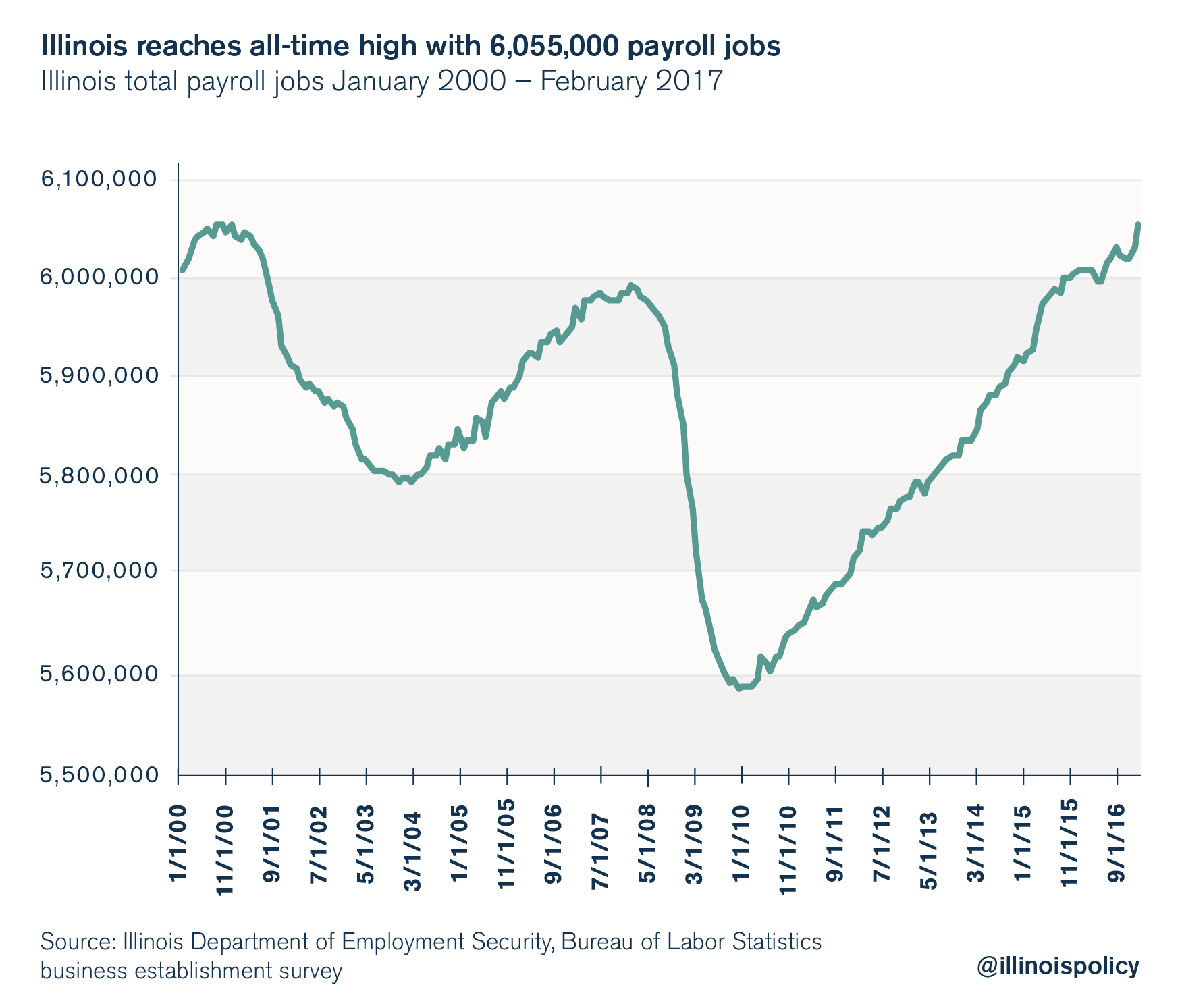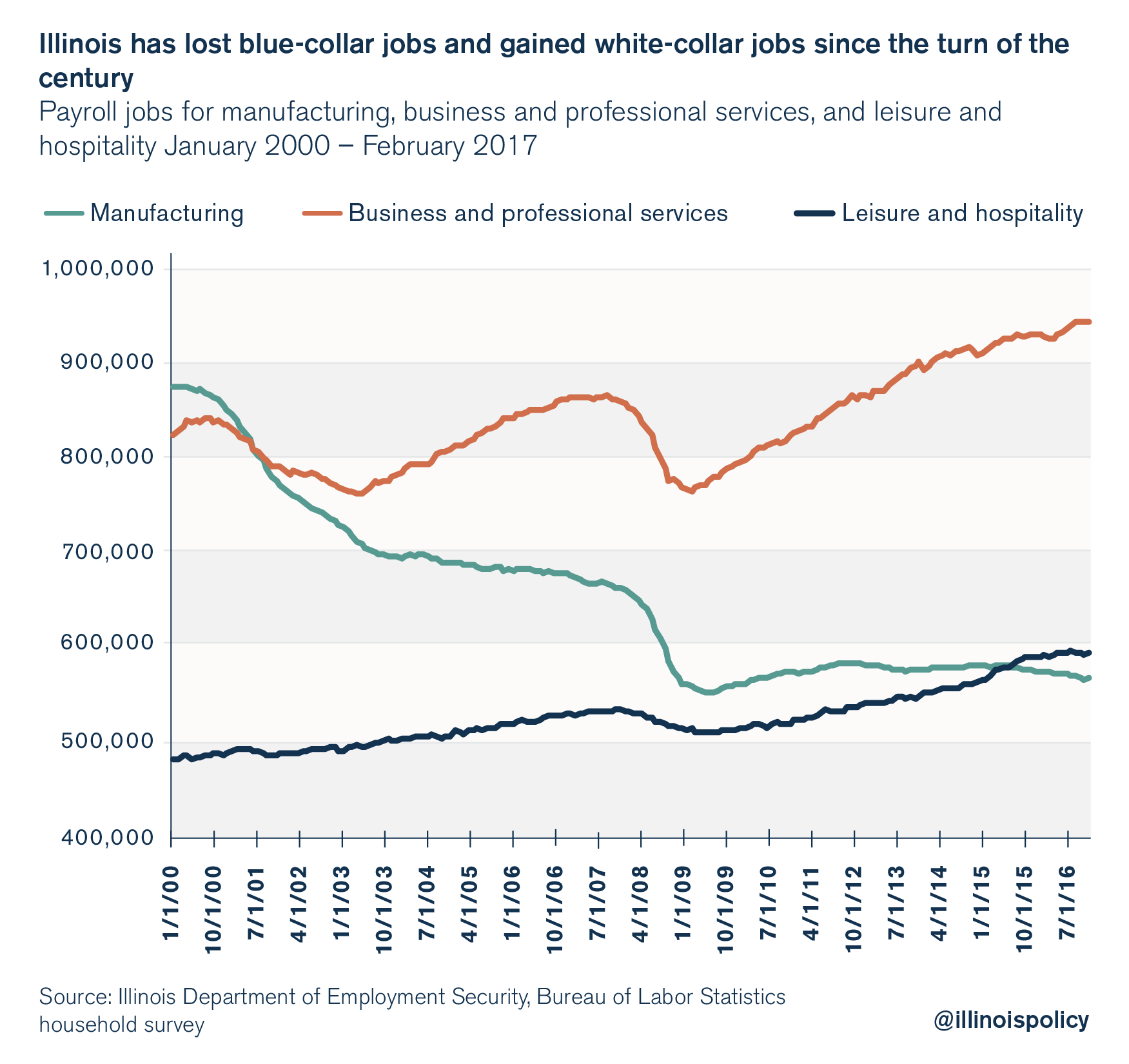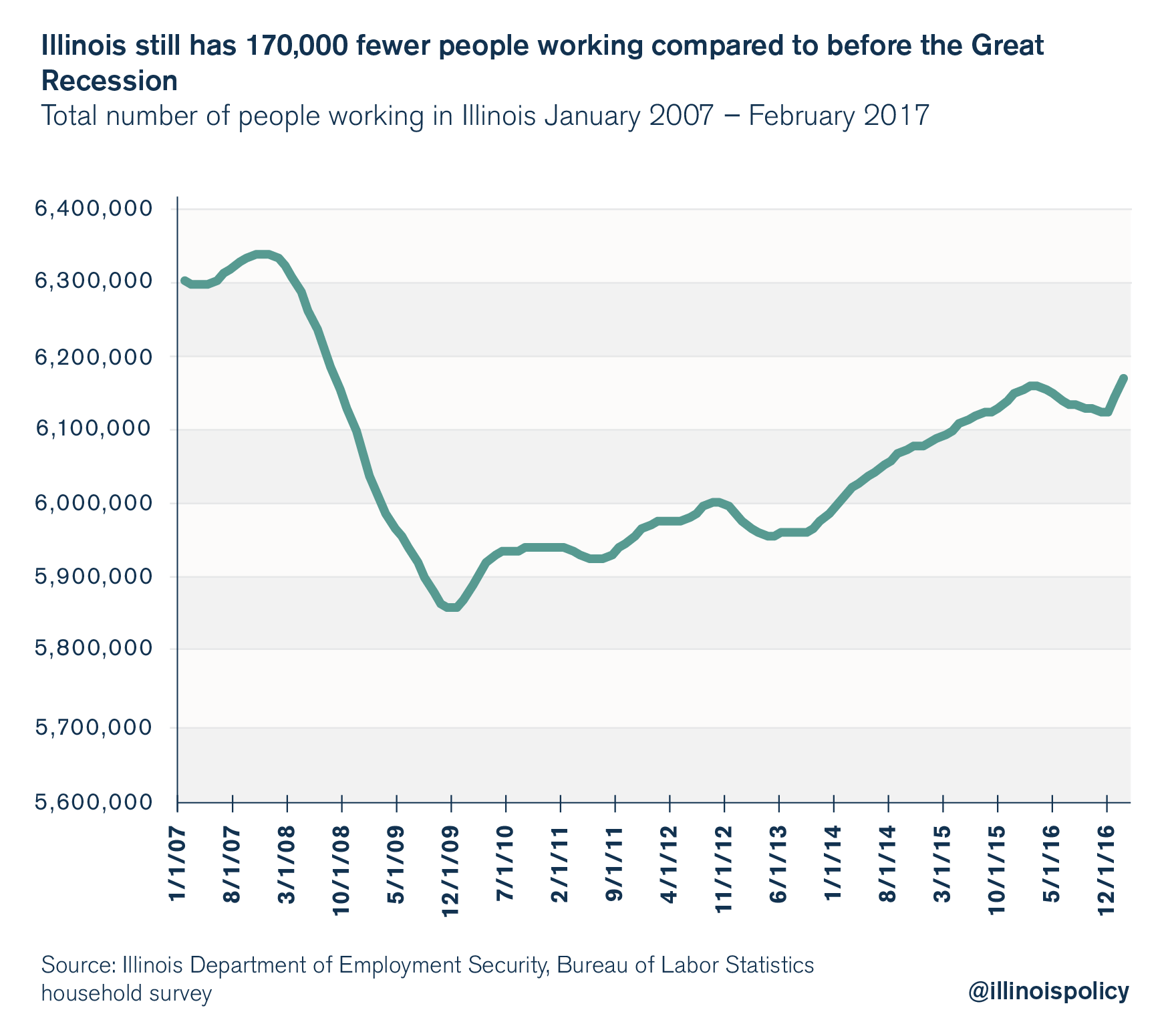Illinois has unusually strong jobs growth in February
In February 2017 Illinois surpassed its previous jobs peak from September 2000. However, long-term problems could potentially hamstring further jobs growth if left unaddressed.
Illinois’ jobs market saw unusually strong gains in February, giving the state a welcome boost in its economic data. Illinois now sits at an all-time high for total jobs count as a result of gaining 25,600 jobs in February and having an upward revision in its January jobs data.
The February jobs report has good news for jobs-starved Illinoisans. However, February is one month in the midst of negative long-term trends. Illinois has suffered the loss of well-paying blue-collar jobs as the result of global changes and state policy mistakes. Furthermore, Illinois has struggled with out-migration and is losing many working-age adults to other states, resulting in a smaller labor force.
February 2017 jobs data
Illinois’ February jobs data from the Illinois Department of Employment Security (IDES) shows strong overall job creation with large gains in government (+8,300); construction (+7,300); education and health (+5,800); financial activities (+2,500) and leisure and hospitality (+2,000). Even manufacturing showed a gain of 1,700 jobs on the month. The only significant loss was of 2,900 jobs in trade, transportation and utilities.

Illinois has reached a new all-time high for total payroll jobs. The February gains were further boosted by revisions to the January data, which now show a growth of 8,100 jobs in January instead of the initial estimate of 1,700. As a result of these gains, Illinois now has 6,055,000 payroll jobs, breaking the previous peak from September 2000.

Illinois’ unemployment situation also improved in February, dropping from 5.7 percent to 5.4 percent. The unemployment rate declined for good reasons – the number of unemployed fell but the labor force did not shrink. The drop in unemployment was captured by a gain in employment in February. Total household employment grew by 28,500.

Long-term headwinds
Illinoisans should welcome the good news that the state now has more payroll jobs than ever recorded by the Bureau of Labor Statistics. This is an important milestone that Illinois policy leaders should look to build upon.
However, it’s important to note the changing composition of Illinois’ job market. Since 2000, Illinois’ job market has seen significant divergence between white-collar jobs in the service sector and blue-collar jobs in manufacturing and construction. For example, Illinois has lost 300,000 manufacturing jobs since the turn of the century. As a result, manufacturing has been surpassed by both businesses and professional services, and leisure and hospitality for total jobs.

The total number of people working in Illinois is also a long-term problem. The BLS’ household survey counts 6,176,100 total people working in Illinois today. This is 170,000 below Illinois’ peak from before the Great Recession. Illinois compares poorly with neighboring states on this metric, with most states around Illinois having more people working today than before the Great Recession.
Illinois has been losing a lot of population to surrounding states, and data from multiple sources – including the IRS, BLS and Census Bureau – show that working-age adults are leaving Illinois fastest.

Policy leaders should build upon the good jobs news in February and work towards fixing the state’s long-term problems. Those long-term problems include unsustainable debts, crippling taxes and over-regulation that result in significant out-migration and the weakest labor market in the Great Lakes region, especially for blue-collar work.
Taxpayers and workers in Illinois need to see both real and symbolic victories. Lawmakers need to pass a real, statewide property tax freeze to protect both beleaguered homeowners and industrial property owners. Then the state needs to pass a balanced budget without raising taxes. A plan to accomplish both of these goals has been proposed by the Illinois Policy Institute. February jobs data offer a glimmer of hope for what Illinois could accomplish every month if lawmakers put the state’s house in order. It’s up to lawmakers whether to work to make this a long-term trend or allow it to be a one-time glimmer of hope that eventually fades away.
